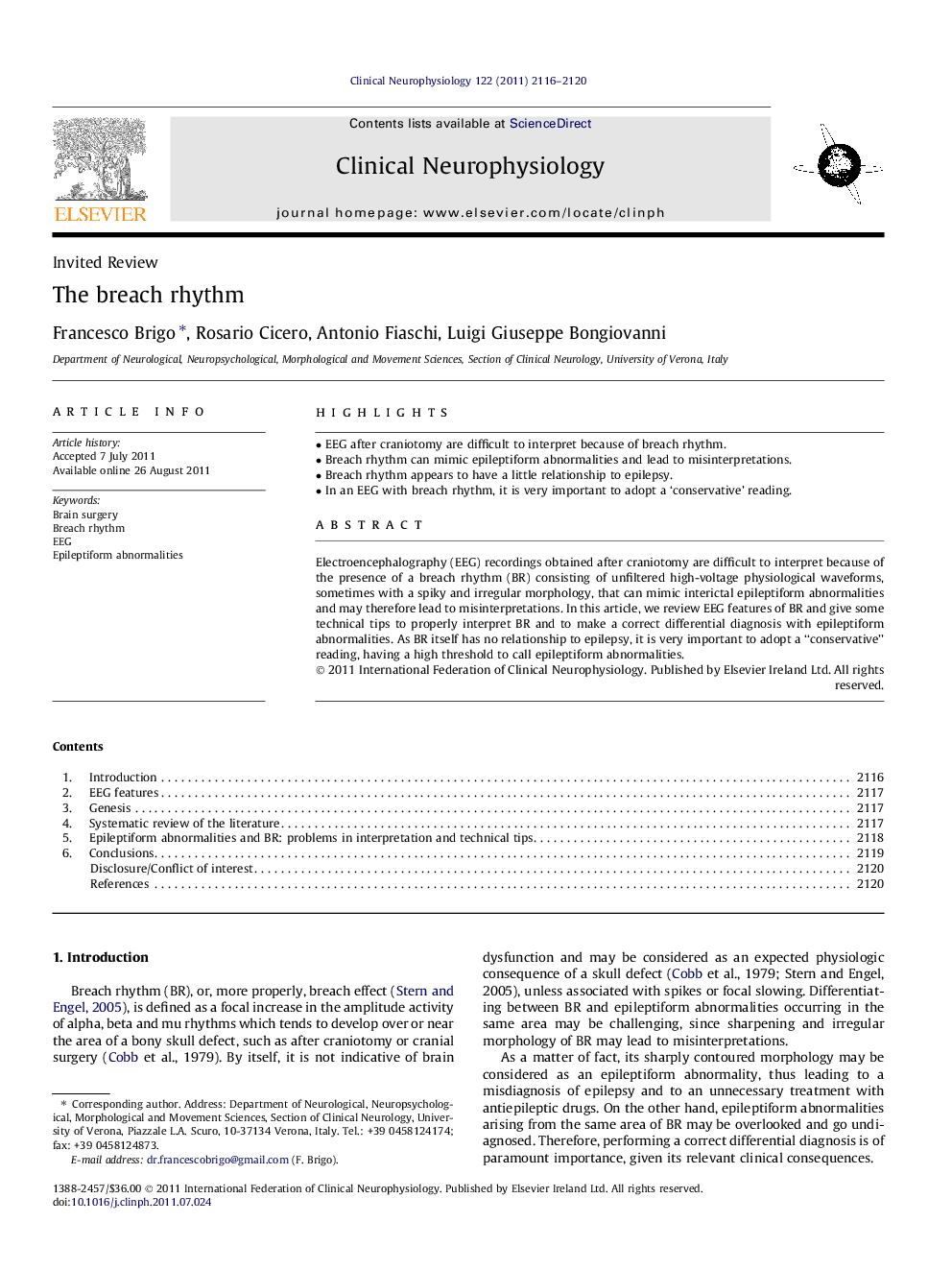| Article ID | Journal | Published Year | Pages | File Type |
|---|---|---|---|---|
| 3043789 | Clinical Neurophysiology | 2011 | 5 Pages |
Electroencephalography (EEG) recordings obtained after craniotomy are difficult to interpret because of the presence of a breach rhythm (BR) consisting of unfiltered high-voltage physiological waveforms, sometimes with a spiky and irregular morphology, that can mimic interictal epileptiform abnormalities and may therefore lead to misinterpretations. In this article, we review EEG features of BR and give some technical tips to properly interpret BR and to make a correct differential diagnosis with epileptiform abnormalities. As BR itself has no relationship to epilepsy, it is very important to adopt a “conservative” reading, having a high threshold to call epileptiform abnormalities.
► EEG after craniotomy are difficult to interpret because of breach rhythm. ► Breach rhythm can mimic epileptiform abnormalities and lead to misinterpretations. ► Breach rhythm appears to have a little relationship to epilepsy. ► In an EEG with breach rhythm, it is very important to adopt a ‘conservative’ reading.
